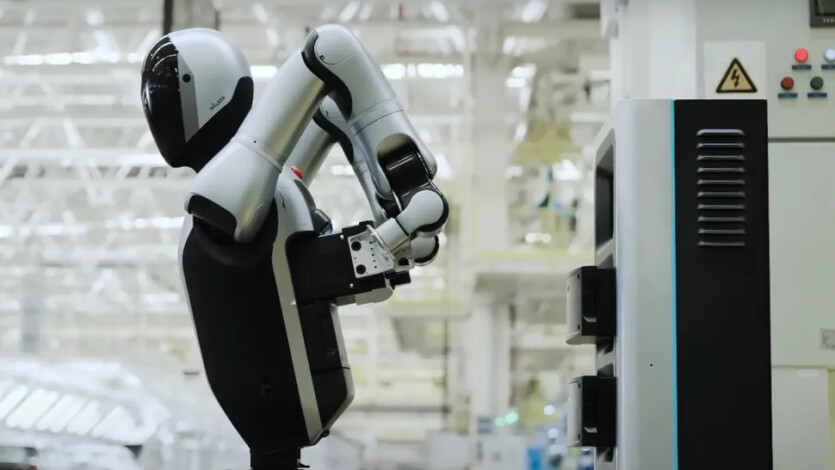
The Chinese company UBTech has presented a model of a humanoid robot capable of replacing its own batteries and working 24 hours a day, 7 days a week.
The Walker S2 robot is 162 centimeters tall and weighs 43 kg. It is powered by 48-volt lithium battery in a dual-battery system. It can walk for 2 hours, or stand for 4 hours before the battery runs out. It takes 90 minutes to fully charge the battery.
However, instead of depending on a human operator to change the batteries, the robot independently approaches the charging station and changes the batteries within just 3 minutes. It can also independently determine the remaining charge and make a replacement decision depending on the priority of the tasks.
The robot is designed for use in industrial or service industries, such as greeting and meeting customers in public places. The Walker S2 has 20 degrees of freedom — the ways in which it can move joints or mechanisms. It is also compatible with Wi-Fi and Bluetooth.
The Walker S2 is equipped with advanced technology for balancing the power of two batteries and uses standardized battery modules for performance optimization. This system allows the robot to switch from the working battery to the backup battery in case of discharge or failure of the main battery.
Earlier this year, UBTech introduced the world’s first system that allowed for the control of several humanoid robots simultaneously working together to complete a task. The effectiveness was demonstrated at at Zeekr’s 5G-enabled smart factory. Based on UBTech’s BrainNet platform, cloud-based artificial intelligence integrates several robotic systems to make highly efficient decisions and distribute control over multiple tasks simultaneously.
The system is based on a large-scale multimodal thinking model and manages complex production line planning and decision-making. Under general control, robotic systems receive tasks and perform them as quickly and accurately as possible.
The system is based on the DeepSeek-R1 logic-based reasoning technology and is trained on real data from the factory settings of vehicles. Using the technology of augmented data generation (RAG), the model adapts to work functions and improves performance at workstations.
At Zeekr’s facility, dozens of Walker S1s now work together to perform tasks such as picking, inspecting, and transporting parts. Using semantic VSLAM and shared mapping, they seamlessly coordinate their actions with vision-based navigation and flexible manipulation.
Source: LiveScience; Interesting Engineering

Spelling error report
The following text will be sent to our editors: